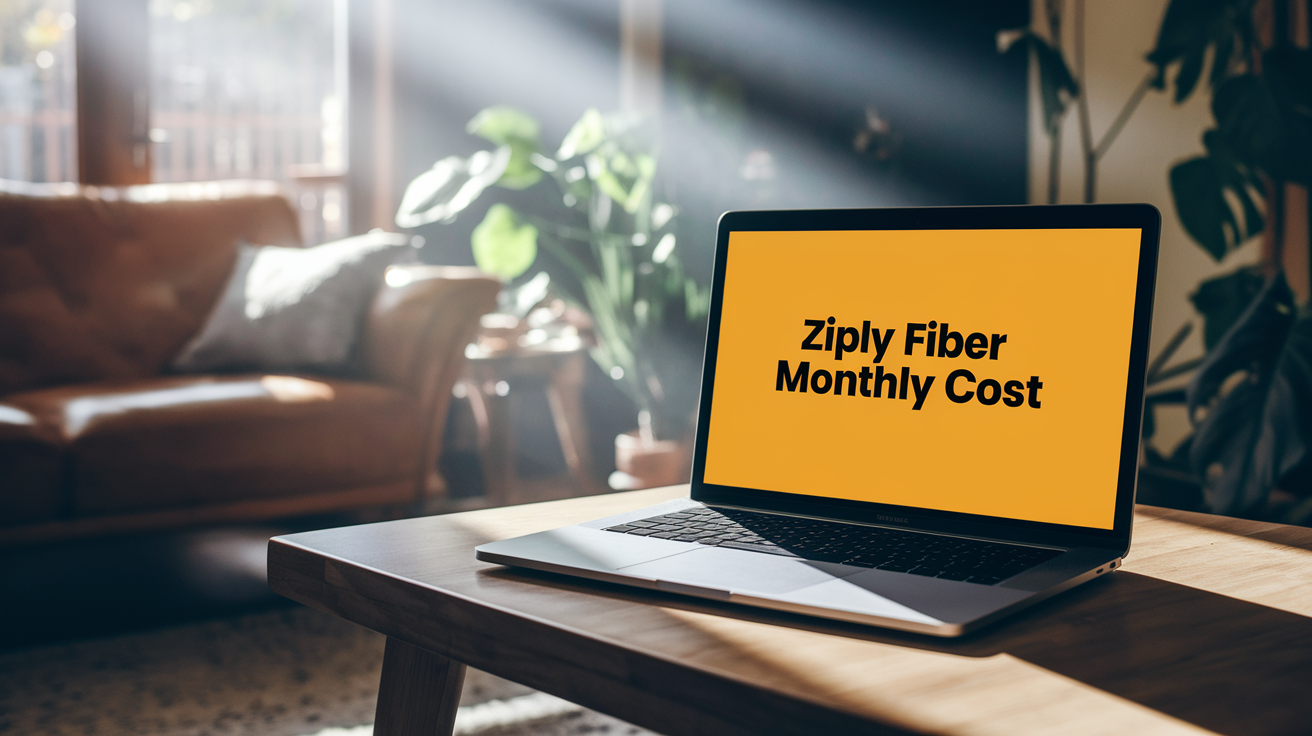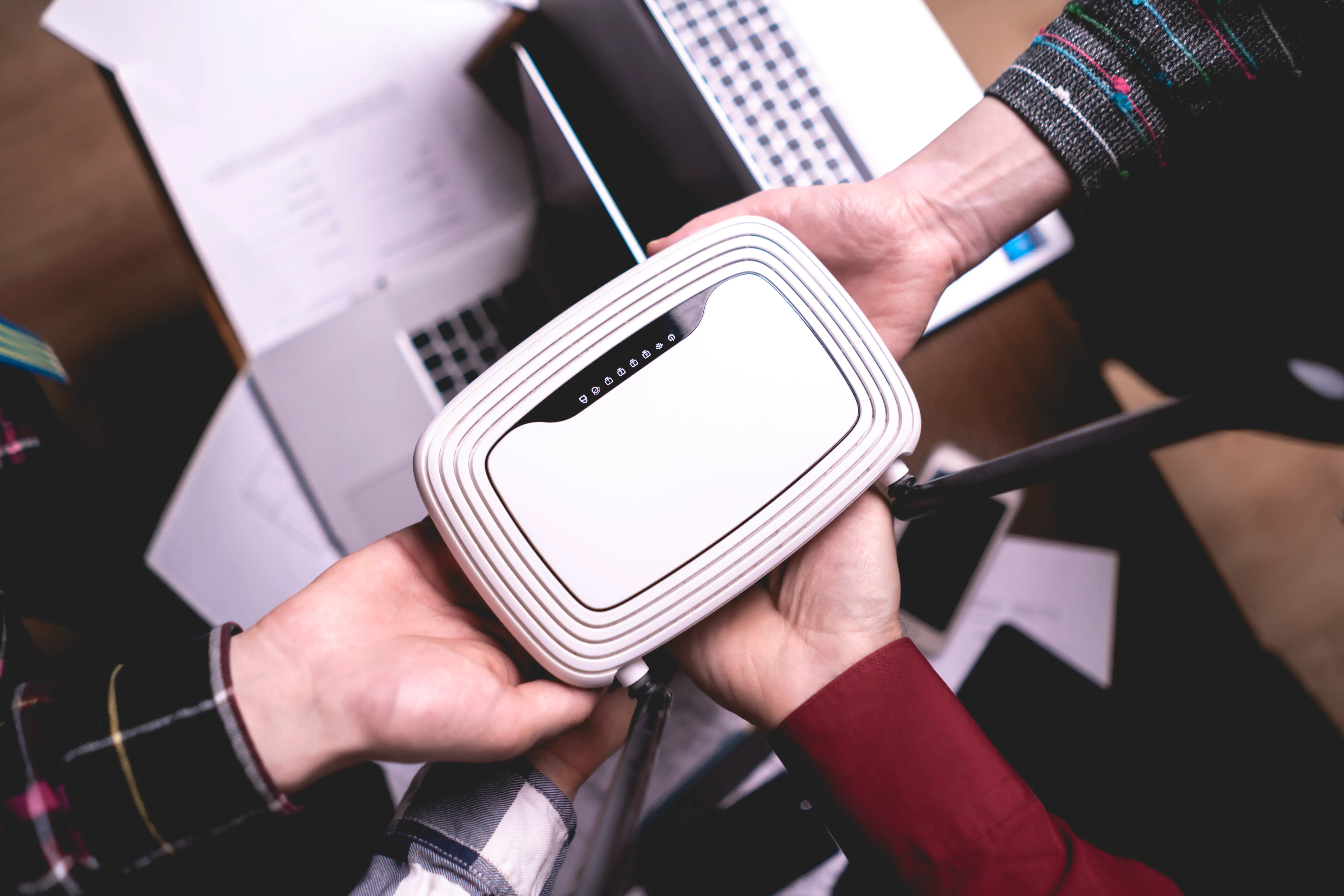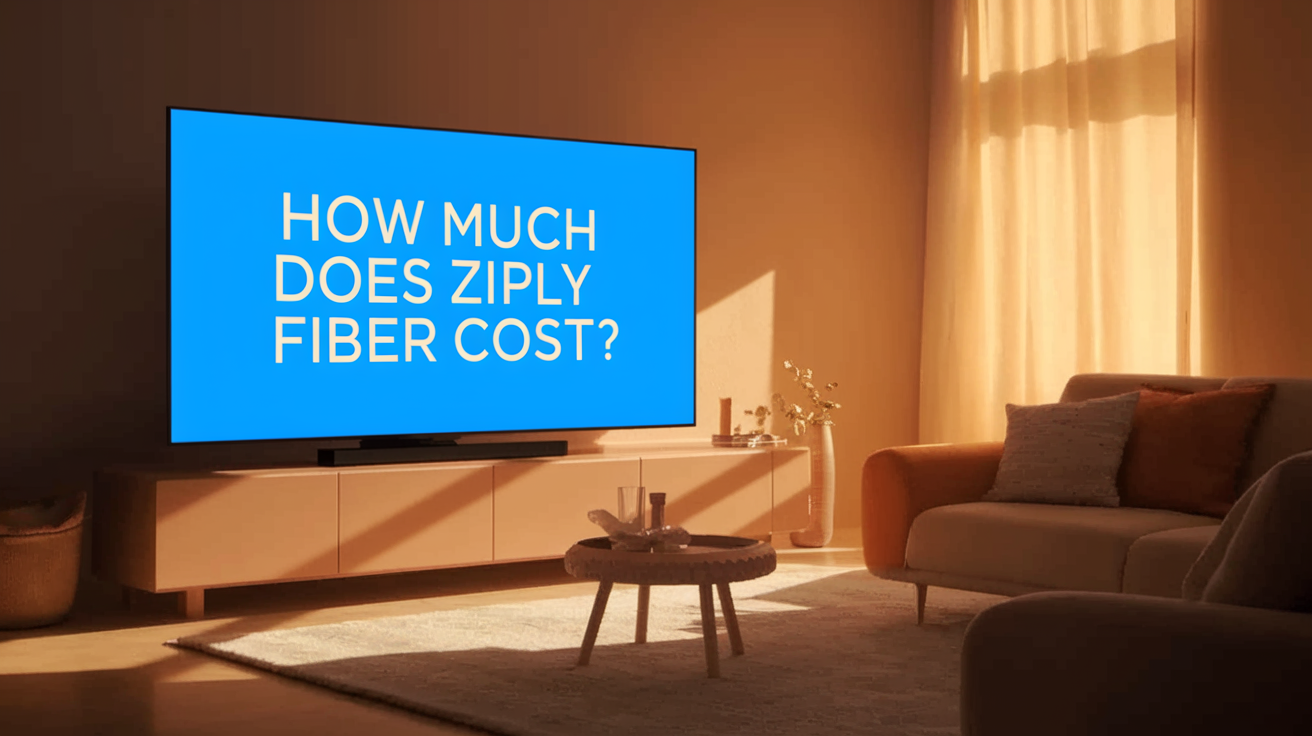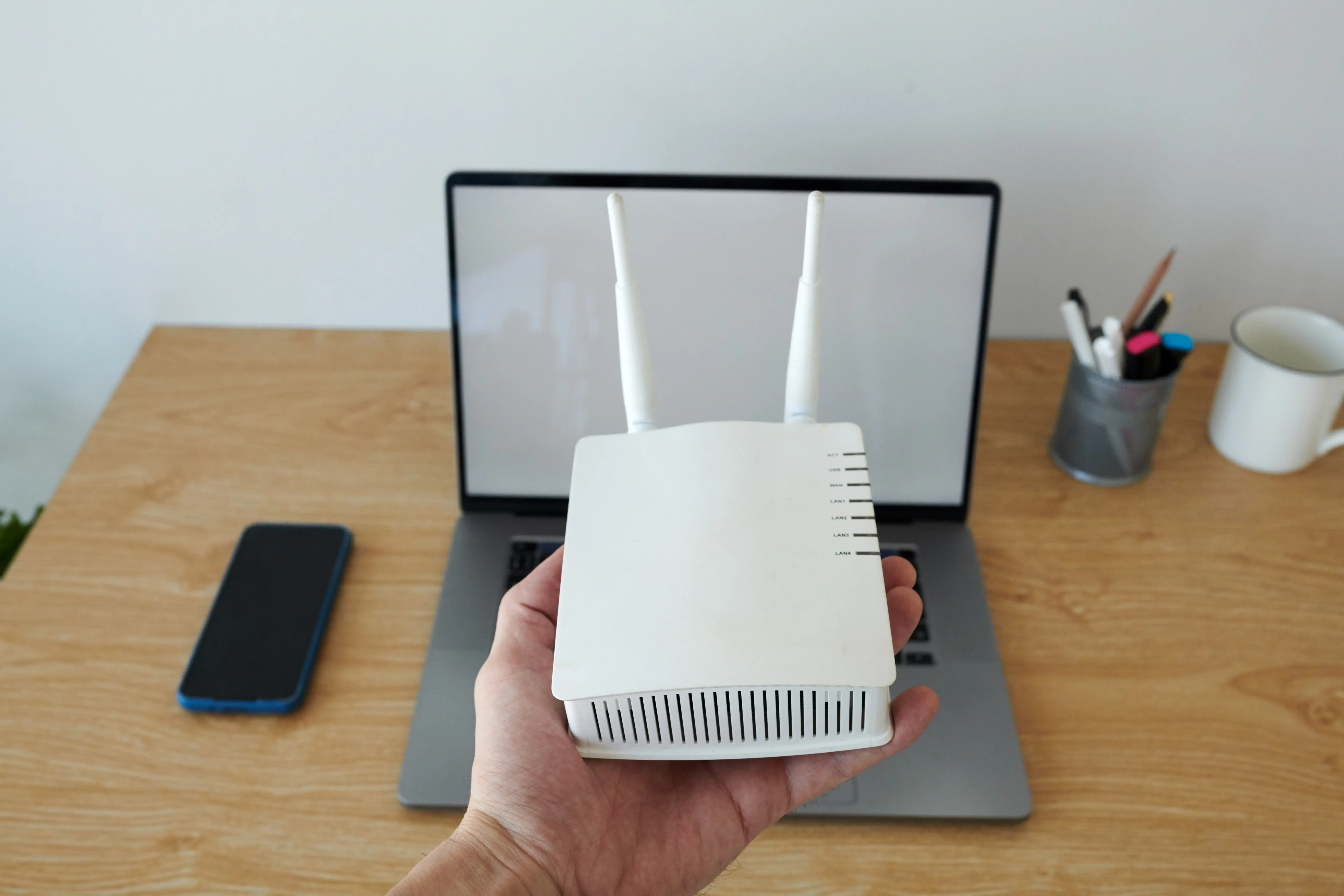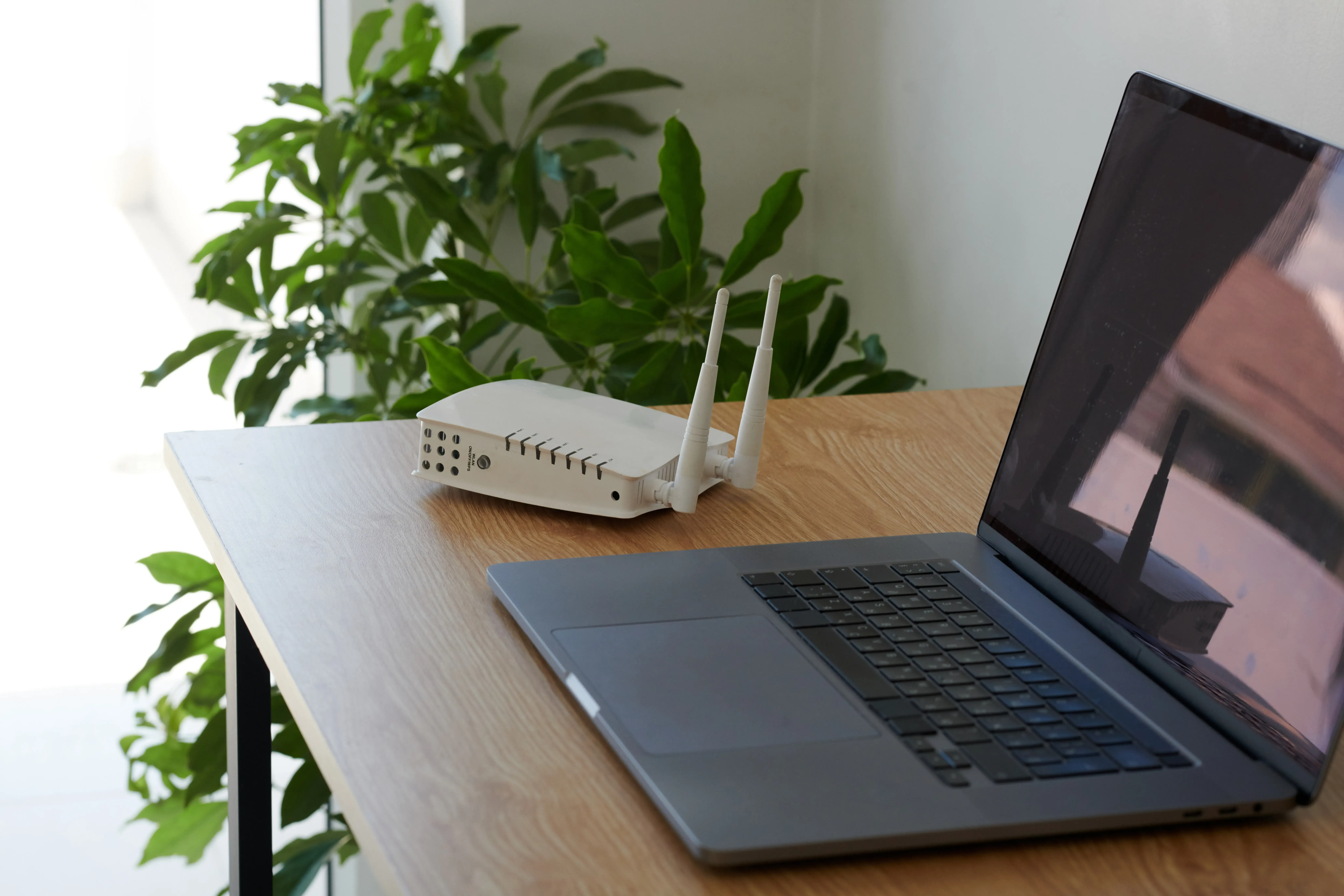Ziply Fiber Senior Discount

Discover how Ziply Fiber is making high-speed internet accessible for seniors. This guide explores the Ziply Fiber senior discount, eligibility, how to apply, and compares it with other providers, ensuring you get the best value for your connection in 2025.
Understanding the Ziply Fiber Senior Discount
In the digital age, reliable and affordable internet access is no longer a luxury but a necessity. For seniors, staying connected means easier access to healthcare, communication with loved ones, online banking, and a wealth of information and entertainment. Ziply Fiber, a company known for its commitment to bringing high-speed internet to underserved and rural areas, understands the importance of affordability. This has led many to inquire about specific programs, such as a "Ziply Fiber senior discount." While the term "senior discount" might evoke images of direct price reductions based solely on age, the landscape of internet affordability programs is often more nuanced, encompassing broader initiatives designed to help low-income households, which often include seniors.
Many telecommunications providers offer various programs to make their services more accessible. These can range from government-subsidized programs to specific promotions or bundles designed for particular demographics. The search for a "Ziply Fiber senior discount" reflects a common desire among older adults to find cost-effective solutions for essential services. This exploration will delve into whether Ziply Fiber directly offers a discount specifically for seniors, and if not, what other avenues exist for seniors to secure affordable internet through Ziply Fiber or alternative providers in 2025. We will investigate eligibility requirements, application processes, and comparative value propositions to ensure seniors can make informed decisions about their internet service.
Is There a Ziply Fiber Senior Discount in 2025?
As of 2025, Ziply Fiber does not explicitly advertise a "senior discount" in the traditional sense, meaning a direct price reduction offered solely based on an individual's age. Many telecommunications companies have shifted their focus from age-specific discounts to broader programs that assist lower-income households, recognizing that financial need, rather than age alone, is the primary barrier to affordable internet access. These programs often benefit seniors significantly, as many older adults live on fixed incomes.
Instead of a dedicated senior discount, Ziply Fiber, like many internet service providers, participates in and promotes government initiatives aimed at making broadband more affordable. The most prominent of these is the Affordable Connectivity Program (ACP). While the ACP has undergone changes and its future funding is subject to legislative action, it has historically provided a significant monthly discount on internet service for eligible households. Seniors who meet the income requirements or are enrolled in other qualifying federal assistance programs can benefit immensely from this initiative. Ziply Fiber actively encourages eligible customers to apply for the ACP, making it the primary pathway for seniors to reduce their monthly internet bills with the company.
It's crucial for seniors looking for savings to understand that while a direct "senior discount" might not be listed, the available government-backed programs are designed to offer substantial financial relief. These programs often have broader eligibility criteria that encompass seniors who might not qualify for age-specific discounts but do qualify based on income or participation in other federal aid programs. Therefore, the absence of a direct "Ziply Fiber senior discount" does not mean that affordable internet options are unavailable. Instead, the focus shifts to leveraging existing, robust federal programs.
Beyond federal programs, Ziply Fiber may offer promotional deals or bundled packages that could indirectly benefit seniors by providing excellent value. These promotions can change frequently, so it's always advisable to check their official website or speak with a customer service representative to inquire about any current offers that might align with their needs and budget. The key takeaway for seniors is to explore all available avenues for savings, with a particular emphasis on programs like the ACP, which are designed to make broadband accessible to those who need it most.
Eligibility Criteria for Ziply Fiber Discounts
The primary pathway to significant savings on Ziply Fiber internet service for seniors, and indeed for most eligible households, is through government-funded programs. The most impactful of these has been the Affordable Connectivity Program (ACP). While the ACP's future is uncertain, understanding its eligibility criteria provides a clear picture of how internet discounts are generally structured for those seeking affordability.
Eligibility for the Affordable Connectivity Program (ACP) typically included:
- Income-Based Eligibility: Households with a total income at or below 200% of the Federal Poverty Guidelines. This is a critical criterion for many seniors living on fixed incomes, as their annual earnings may fall within this threshold. For instance, in 2024, the poverty line for a single individual was approximately $14,580, meaning a household income of $29,160 or less could qualify. These figures are updated annually, so checking the latest guidelines is essential.
- Participation in Federal Assistance Programs: Individuals or households enrolled in certain federal assistance programs automatically qualified. These programs often include:
- Medicaid
- Supplemental Nutrition Assistance Program (SNAP)
- Supplemental Security Income (SSI)
- Federal Public Housing Assistance (FPHA)
- Veterans Pension and Survivors Benefit
- Tribal programs like the Bureau of Indian Affairs General Assistance (BIA)
- National School Lunch Program (NSLP)
- Existing Low-Income Programs: Some providers might have had specific low-income programs that, if met, also granted ACP eligibility.
Ziply Fiber's Specific Considerations:
While Ziply Fiber itself doesn't set the eligibility for the ACP, they are a participating provider. This means that if a senior qualifies for the ACP through the Universal Service Administrative Company (USAC), they can apply that benefit to their Ziply Fiber bill. Ziply Fiber's role is to verify ACP enrollment and apply the discount to the customer's monthly service charge. Therefore, the eligibility criteria are dictated by the federal government's guidelines for the ACP, not by Ziply Fiber's internal policies for a "senior discount."
Beyond the ACP: Other Potential Discounts or Promotions
Even if the ACP is no longer available or a senior doesn't qualify, Ziply Fiber might offer other ways to save:
- Promotional Offers: Ziply Fiber frequently runs limited-time promotions on their internet plans. These might include introductory pricing, waived installation fees, or bundled services. While not age-specific, seniors can take advantage of these general offers. It's advisable to check the Ziply Fiber website regularly or contact their sales department for the latest deals.
- Bundled Services: Sometimes, bundling internet with other services (if offered by Ziply Fiber or partners) can lead to overall cost savings. However, this is less common for pure fiber providers like Ziply, which often focus on internet-only services.
- Low-Cost Plans: Ziply Fiber's standard plans might already be competitive, especially in areas where they offer fiber-to-the-home. Seniors should compare the cost of Ziply's entry-level plans against their budget and the speeds offered.
Documentation Required:
For programs like the ACP, applicants typically needed to provide proof of eligibility. This could include:
- Proof of income (e.g., tax returns, pay stubs, Social Security benefit statements)
- Proof of participation in a qualifying federal assistance program (e.g., an award letter, benefit statement)
It is essential for seniors to have these documents readily available when applying for any discount or assistance program to expedite the process. The focus remains on demonstrating financial need or participation in government aid, which is the most direct route to significant savings on Ziply Fiber services in 2025.
How to Apply for Ziply Fiber Discounts
Applying for discounts on Ziply Fiber internet service, particularly through programs like the Affordable Connectivity Program (ACP), involves a structured process. Since Ziply Fiber does not offer a direct senior discount, the application steps primarily revolve around qualifying for and applying federal assistance programs. Here's a breakdown of the typical process, assuming the ACP is the primary avenue:
Step 1: Determine Eligibility
Before applying, it's crucial to confirm eligibility. As discussed previously, this usually involves:
- Checking Income Guidelines: Compare your household's annual income against the 200% Federal Poverty Guidelines. These figures are updated annually by the government.
- Verifying Program Participation: Confirm if you are enrolled in any of the qualifying federal assistance programs (e.g., SNAP, Medicaid, SSI, Veterans Pension).
You can find the latest poverty guidelines and a list of qualifying programs on the official ACP website or through the Universal Service Administrative Company (USAC), which administers the program.
Step 2: Gather Necessary Documentation
Having your documentation ready will streamline the application process. You will likely need:
- Proof of Identity: A government-issued ID (e.g., driver's license, passport).
- Proof of Income: Recent pay stubs, tax returns, Social Security statements, or pension statements.
- Proof of Program Participation: An official letter or statement from the agency confirming your enrollment in a qualifying program (e.g., a SNAP benefit card or letter, Medicaid card or letter, SSI award letter).
Keep copies of all documents for your records.
Step 3: Apply for the Affordable Connectivity Program (ACP)
There are two primary ways to apply for the ACP:
- Online Application: Visit the official ACP website (usually managed by USAC). You will need to create an account and fill out the online application form, uploading your supporting documents. This is often the quickest method.
- Mail-in Application: Download the application form from the ACP website, fill it out, and mail it along with copies of your supporting documents to the address provided. This method may take longer to process.
During the application, you will be asked to select your internet service provider. If Ziply Fiber is available in your area and you wish to use the discount with them, you will indicate Ziply Fiber as your chosen provider.
Step 4: Receive Approval and Link to Ziply Fiber
Once your application is approved by USAC, you will receive a confirmation. Your eligibility will be registered in the system. The next step is to link your ACP benefit to your Ziply Fiber service.
- If you are a new Ziply Fiber customer: Inform the Ziply Fiber sales representative during the sign-up process that you have been approved for the ACP and wish to apply the benefit to your new service. They will guide you through the final steps to ensure the discount is applied to your monthly bill.
- If you are an existing Ziply Fiber customer: Contact Ziply Fiber's customer service directly. Let them know you have been approved for the ACP and provide them with your ACP application approval details (often a reference number). They will then apply the discount to your existing account.
It's important to note that the ACP discount is applied to your monthly bill, reducing the amount you owe Ziply Fiber. The discount typically covers a significant portion of the internet service cost, and in some cases, may cover the entire cost of a basic internet plan.
Step 5: Managing Your Ziply Fiber Service and Discount
Once the discount is applied, continue to pay your Ziply Fiber bill as usual, noting the reduced amount. It's essential to maintain your eligibility for the ACP. If your circumstances change (e.g., your income increases significantly, or you are no longer enrolled in a qualifying program), you must report this change, as it may affect your eligibility. Similarly, if Ziply Fiber offers promotional pricing, discuss with them how the ACP discount will interact with these offers to ensure you are receiving the maximum possible savings.
Alternative Application Paths (If Applicable)
While the ACP is the main federal program, Ziply Fiber might occasionally have other limited-time promotions or regional offers. For these:
- Check the Ziply Fiber Website: Regularly visit the "Deals" or "Promotions" section of the Ziply Fiber website.
- Contact Ziply Fiber Sales: Call their sales department and explicitly ask about any current discounts or special offers available for new or existing customers. Be sure to mention if you are a senior, as they might be able to guide you to the most suitable plan or offer.
The process for applying these types of discounts is usually handled directly by Ziply Fiber customer service or sales representatives during the sign-up or service upgrade process.
By following these steps, seniors can effectively navigate the application process and secure the most affordable internet service possible through Ziply Fiber, leveraging available government programs and provider-specific offers.
Alternatives to Ziply Fiber Senior Discounts
For seniors seeking affordable internet, Ziply Fiber's lack of a direct senior discount means exploring other avenues is essential. Fortunately, the telecommunications landscape offers several alternatives that can provide significant savings. These alternatives often mirror the structure of government-supported programs or offer competitive pricing tailored to budget-conscious consumers.
1. Government-Subsidized Programs (Beyond ACP)
While the ACP has been the flagship program, other federal and state initiatives might exist or emerge. Seniors should stay informed about potential new programs or variations of existing ones. These can include:
- Lifeline Program: This is a long-standing federal program that provides a discount on monthly telephone service for low-income consumers. In some cases, Lifeline can also be applied to broadband internet service, either as a standalone service or as part of a bundled package. Eligibility for Lifeline is similar to ACP, often based on income or participation in other federal aid programs. Seniors who qualify for Lifeline may be able to use this benefit to reduce their internet bills with various providers, including potentially Ziply Fiber if they accept Lifeline benefits (though this varies by provider and program rules).
- State and Local Initiatives: Many states and local municipalities have their own broadband access programs or initiatives aimed at increasing affordability. These can include grants, subsidies, or partnerships with providers to offer discounted services in specific regions. Seniors should check their state's public utility commission website or their local government's digital inclusion office for information on such programs.
2. Other Internet Service Providers (ISPs) with Senior-Focused Programs
While Ziply Fiber focuses on fiber infrastructure, other ISPs might have different offerings that cater more directly to seniors or low-income individuals:
- AT&T Access: AT&T offers a low-income internet program called Access that provides discounted home internet service to eligible households. Eligibility is typically based on participation in the National School Lunch Program, SNAP, or meeting certain income thresholds.
- Xfinity Internet Essentials: Comcast's Internet Essentials program is designed for low-income families and individuals. It offers affordable broadband internet, free in-home WiFi, and a free computer. Eligibility is often based on participation in government assistance programs like SNAP, Medicaid, or housing assistance.
- Spectrum Internet Assist: Charter Spectrum offers a low-income broadband program that provides a 30 Mbps connection at an affordable monthly rate. Eligibility is typically based on participation in programs like the National School Lunch Program or the FCC's Lifeline program.
These programs, while not exclusively for seniors, are highly beneficial for older adults who meet the eligibility criteria, often based on income or participation in federal aid programs.
3. Discounted Plans from Major ISPs
Even without specific senior discounts, major ISPs often have tiered pricing structures. Seniors can look for:
- Entry-Level Plans: Most providers offer basic internet plans at lower price points. These might be sufficient for seniors who primarily use the internet for email, browsing, and occasional streaming.
- Promotional Offers: ISPs frequently run introductory offers for new customers. Seniors can take advantage of these by comparing deals and switching providers when promotions expire to find new savings.
4. Community and Non-Profit Organizations
Some community organizations and non-profits focus on digital inclusion and may offer assistance or resources for seniors to obtain affordable internet. This could include:
- Device and Internet Assistance: Organizations might provide refurbished computers or tablets, or even help with the cost of internet service through grants or partnerships.
- Digital Literacy Training: While not a direct discount, these programs equip seniors with the skills to use the internet effectively, maximizing the value of their service.
5. Bundling and Negotiation
While less common with pure fiber providers like Ziply, some traditional ISPs offer bundles (internet, TV, phone) that can sometimes be more cost-effective than individual services. Seniors can also try negotiating with their current provider, especially if they are considering switching to a competitor. Loyalty programs or retention offers might be available.
Key Considerations for Seniors:
- Focus on Eligibility: The most significant savings often come from programs based on income or participation in federal aid, not age alone.
- Research Local Options: Availability of providers and specific programs varies by location.
- Read the Fine Print: Understand the speeds, data caps (if any), and contract terms associated with any discounted plan.
- Stay Updated: Government programs and ISP offers change. Regularly check for updates.
By exploring these alternatives, seniors can find reliable and affordable internet solutions that meet their needs and budget, even if a direct Ziply Fiber senior discount isn't available.
Comparing Ziply Fiber with Other Providers for Seniors
When considering internet providers, seniors need to balance cost, speed, reliability, and available discounts. Ziply Fiber, with its focus on fiber-optic technology, offers distinct advantages in terms of speed and reliability, but its lack of a direct senior discount requires careful comparison with other providers who might offer more targeted savings programs.
Ziply Fiber: Strengths and Weaknesses for Seniors
Strengths:
- Fiber-Optic Technology: Ziply Fiber primarily offers fiber-to-the-home (FTTH) internet. This means significantly faster download and upload speeds compared to cable or DSL. For seniors who stream video, participate in video calls, or use multiple devices simultaneously, fiber offers a superior, lag-free experience.
- Reliability: Fiber optic cables are less susceptible to interference and weather-related outages than traditional copper lines, leading to more consistent service.
- No Data Caps: Ziply Fiber typically does not impose data caps on its residential plans, allowing for unlimited internet usage without worrying about overage charges.
- Potential for Affordable Plans via ACP: If the Affordable Connectivity Program (ACP) is active and Ziply Fiber is a participating provider, seniors can significantly reduce their monthly bill.
Weaknesses:
- No Direct Senior Discount: As previously established, Ziply Fiber does not offer a discount specifically for seniors. Savings rely heavily on federal programs like the ACP.
- Limited Availability: Ziply Fiber's service area is concentrated in specific regions, primarily the Pacific Northwest (Washington, Oregon, Idaho, Montana) and parts of the Midwest. Not all seniors will have access to Ziply Fiber.
- Pricing Can Be Higher Without Discounts: While competitive for fiber, Ziply's standard pricing might be higher than basic DSL or cable plans from other providers if no discounts are applied.
Other Providers: Strengths and Weaknesses for Seniors
We'll compare Ziply Fiber against providers known for offering low-income or senior-friendly programs, such as Comcast (Xfinity), AT&T, and Charter (Spectrum).
1. Comcast (Xfinity)
Strengths:
- Internet Essentials: Xfinity's flagship low-income program offers affordable internet (often around 50 Mbps download) at a significantly reduced monthly rate for eligible households. This is a direct discount program that many seniors can qualify for.
- Wide Availability: Xfinity has a vast service footprint across the United States.
- Bundling Options: Offers bundles of internet, TV, and phone services, which can sometimes be cost-effective.
Weaknesses:
- Technology: Primarily uses cable internet, which can be slower and less reliable than fiber, especially during peak hours. Upload speeds are typically much slower than download speeds.
- Data Caps: Many Xfinity plans have data caps, which can lead to extra charges if exceeded.
- Complex Pricing: Standard pricing can be high, and promotional rates often increase significantly after the introductory period.
2. AT&T
Strengths:
- AT&T Access: Offers a low-income internet program with discounted speeds, often suitable for basic online activities.
- Fiber Availability: In many areas, AT&T also offers fiber-to-the-home internet, providing speeds comparable to Ziply Fiber.
- Bundling: Offers bundles with AT&T Wireless and DIRECTV.
Weaknesses:
- Availability: Fiber availability is not universal. DSL service is still common in many areas and is significantly slower.
- Data Caps: Some AT&T plans, particularly DSL, may have data caps.
- Program Specificity: While AT&T Access is beneficial, it might not always offer the highest speeds compared to Ziply's standard fiber plans.
3. Charter (Spectrum)
Strengths:
- Spectrum Internet Assist: Offers a low-cost, high-speed (300 Mbps download) internet plan for eligible low-income households. This program provides excellent value for the speed offered.
- No Data Caps: Spectrum is known for not imposing data caps on its internet plans, which is a significant advantage.
- Wide Availability: Similar to Xfinity, Spectrum has a broad service area.
Weaknesses:
- Technology: Primarily uses cable internet, with similar potential limitations as Xfinity regarding peak-hour congestion and upload speeds compared to fiber.
- No Specific Senior Discount: Like Ziply, savings come from low-income programs, not age-specific discounts.
Comparison Table (Illustrative - 2025 Estimates)
This table provides a general comparison. Actual prices and speeds vary by location and plan. Eligibility for discount programs is key.
| Provider | Technology | Typical Speeds (Download/Upload) | Discount Program | Estimated Monthly Cost (with Discount) | Data Caps | Availability |
|---|---|---|---|---|---|---|
| Ziply Fiber | Fiber | 300 Mbps / 300 Mbps to 1 Gbps / 1 Gbps | ACP (if active/available) | Varies (ACP discount applied) | No | Limited (Pacific NW, Midwest) |
| Xfinity (Comcast) | Cable | 50 Mbps / 10 Mbps (Internet Essentials) to 1.2 Gbps / 35 Mbps (standard) | Internet Essentials (low-income) | ~$30/month (Internet Essentials) | Yes (300GB-1.2TB) | Broad |
| AT&T | Fiber/DSL | 100 Mbps / 100 Mbps (Fiber) to 10 Mbps / 1 Mbps (DSL) | AT&T Access (low-income) | Varies (~$20-30/month for eligible) | Yes (for DSL, Fiber may vary) | Broad (Fiber availability varies) |
| Spectrum (Charter) | Cable | 300 Mbps / 20 Mbps (Internet Assist) to 1 Gbps / 35 Mbps (standard) | Spectrum Internet Assist (low-income) | ~$25/month (Internet Assist) | No | Broad |
Note: Costs are estimates and subject to change. Eligibility for discount programs is crucial. Always verify current offers and terms with the provider.
Key Considerations for Seniors Making a Choice:
- Availability: The first step is always to check which providers offer service at your address. Ziply Fiber's availability is a significant limiting factor.
- Speed vs. Cost: If Ziply Fiber is available and offers ACP, it might provide the best combination of high speed and affordability. If not, Spectrum's Internet Assist offers a very competitive speed-to-cost ratio for a cable service without data caps. Xfinity and AT&T also provide valuable low-income options.
- Reliability Needs: For seniors who rely heavily on stable internet for telehealth, remote work, or frequent video calls, fiber (Ziply or AT&T Fiber) is generally superior.
- Data Usage: If a senior tends to use a lot of data, providers without data caps like Ziply Fiber and Spectrum are preferable.
- Bundling Preferences: If a senior also wants TV or phone service, providers like Xfinity and AT&T might offer more integrated bundling solutions.
Ultimately, the "best" provider depends on individual circumstances, location, and eligibility for discount programs. Seniors should prioritize checking availability, understanding their eligibility for low-income programs, and comparing the specific plans and pricing offered in their area.
Maximizing Your Internet Savings with Ziply Fiber
While Ziply Fiber may not offer a direct senior discount, seniors can still significantly reduce their monthly internet expenses by strategically leveraging available programs and making informed choices. Maximizing savings involves understanding the landscape of discounts, comparing plans, and staying proactive.
1. Leverage Government Assistance Programs (ACP and Lifeline)
The most substantial savings will come from participating in federal programs. As of 2025, the primary program to watch is the Affordable Connectivity Program (ACP). If it remains funded and operational, seniors who qualify based on income or participation in other federal aid programs can receive a significant monthly discount on their internet bill. Ziply Fiber is a participating provider, meaning the benefit can be applied directly to their service.
Even if the ACP faces funding challenges, the Lifeline program continues to offer discounts on phone and broadband services. Seniors should investigate their eligibility for Lifeline and check if Ziply Fiber (or other providers) accepts Lifeline benefits in their area. The eligibility criteria for these programs are designed to help low-income households, which often include seniors living on fixed incomes.
Actionable Tip: Regularly check the official websites for the ACP and Lifeline programs for the latest updates on funding, eligibility, and application procedures. Have all necessary documentation (proof of income, program participation) ready.
2. Compare Ziply Fiber Plans Carefully
Ziply Fiber offers various speed tiers. While faster speeds are appealing, seniors should consider their actual internet usage needs. A plan that offers 300 Mbps download and upload speeds might be more than sufficient for basic browsing, email, and occasional video streaming. Opting for a lower-tier plan, if it meets their needs, will result in a lower base price before any discounts are applied.
Actionable Tip: Assess your household's internet usage. If you primarily use the internet for communication and light browsing, a mid-tier plan might be the sweet spot. If you stream high-definition movies daily or have multiple users, a higher tier might be necessary, but always compare the cost-benefit.
3. Look for Promotional Offers and New Customer Deals
Ziply Fiber, like all internet providers, frequently introduces promotional pricing for new customers or for limited periods. While these aren't senior-specific, seniors can take advantage of them. This might involve signing up for a promotional rate and then reassessing their plan and options when the promotion ends.
Actionable Tip: Visit the Ziply Fiber website regularly or sign up for their newsletter to be notified of any special offers. When signing up, always ask the sales representative about current promotions and how they apply to different plans.
4. Understand Installation and Equipment Costs
Beyond the monthly service fee, consider any one-time costs. Ziply Fiber typically includes installation and modem/router rental as part of their service, especially with fiber. However, it's always wise to confirm these details. Some providers might charge extra for professional installation or equipment rental, which can add to the overall cost.
Actionable Tip: Inquire specifically about installation fees and equipment costs (modem, router) when signing up. If Ziply Fiber offers free installation or equipment, this represents an additional saving.
5. Consider Bundling (If Applicable and Beneficial)
While Ziply Fiber primarily focuses on internet service, some providers offer bundles (internet, TV, phone). If Ziply Fiber were to expand its offerings or partner with other services, bundling could potentially lead to savings. However, for most seniors, focusing on a high-quality, affordable internet connection is paramount. Bundling can sometimes lead to paying for services you don't need.
Actionable Tip: If bundling is an option, carefully compare the total cost of the bundle versus the cost of individual services from different providers to ensure it offers genuine savings.
6. Stay Informed and Re-evaluate Periodically
The internet service provider market is dynamic. Prices change, new programs are introduced, and competitors may offer new deals. Seniors should make it a habit to review their internet service and costs annually.
Actionable Tip: Set a reminder to review your internet bill and compare Ziply Fiber's current offers with those of other providers in your area at least once a year. This proactive approach can help you identify opportunities for further savings or better service.
7. Read the Fine Print
Always understand the terms and conditions of any plan or discount. This includes contract lengths, early termination fees, data usage policies, and what happens when promotional periods end. Misunderstanding these details can lead to unexpected costs.
Actionable Tip: Before signing up for any service, ask for a copy of the terms and conditions or ensure you understand them fully. Don't hesitate to ask customer service representatives to clarify anything you're unsure about.
By combining the potential savings from federal programs with careful plan selection and ongoing vigilance, seniors can maximize their internet savings with Ziply Fiber, ensuring they receive reliable, high-speed internet without overpaying.
The Future of Affordable Internet for Seniors
The digital divide continues to be a significant concern, and ensuring seniors have access to affordable, reliable internet is a growing priority. The landscape of internet affordability is constantly evolving, shaped by technological advancements, government policy, and the strategies of internet service providers (ISPs). For seniors, understanding these trends is key to maintaining connectivity without breaking the bank.
Continued Government Investment and Support
Programs like the Affordable Connectivity Program (ACP) have demonstrated the potential for government intervention to make a tangible difference in broadband accessibility. While the ACP has faced funding uncertainties, the underlying need it addresses remains. It is highly probable that future administrations and legislative bodies will continue to explore and implement programs aimed at subsidizing internet costs for low-income households, including seniors. This could manifest as renewed funding for the ACP, modifications to existing programs like Lifeline, or entirely new initiatives focused on digital equity.
The focus is likely to remain on income-based eligibility and participation in federal assistance programs, as these criteria effectively capture many seniors who are most vulnerable to high internet costs. Advocacy groups and industry stakeholders will continue to push for sustained funding and expanded reach for these programs. Seniors should remain vigilant and informed about potential legislative changes and new program rollouts.
Technological Advancements Driving Down Costs
While fiber-optic technology, like that offered by Ziply Fiber, represents the cutting edge in speed and reliability, its deployment can be costly. However, as technology matures and deployment becomes more widespread, the cost per gigabit of bandwidth is expected to decrease. This could lead to ISPs offering higher speeds at more competitive price points in the future, even without specific discounts.
Furthermore, advancements in wireless technologies, such as 5G home internet, offer alternative pathways to broadband access, particularly in areas where traditional wired infrastructure is difficult or expensive to deploy. While these services may not always match the consistent speeds of fiber, they can provide a viable and potentially more affordable option for some users. As these technologies evolve, they could increase competition, driving down prices across the board.
Increased ISP Competition and Innovation
As the importance of broadband becomes more recognized, new ISPs are entering the market, and existing ones are innovating their service offerings. This increased competition can benefit consumers, including seniors, by forcing providers to offer more attractive pricing and better service packages. We may see more providers adopting strategies similar to Ziply Fiber's focus on fiber deployment or offering more flexible, no-contract plans.
Providers are also becoming more sophisticated in how they target specific demographics. While direct "senior discounts" might be less common, ISPs are likely to continue developing tiered pricing structures and promotional offers that appeal to budget-conscious consumers. This could include simplified plans with transparent pricing, which would be highly beneficial for seniors seeking straightforward and affordable options.
Emphasis on Digital Literacy and Inclusion
Beyond just providing access, there is a growing recognition of the need for digital literacy training, especially for older adults. Organizations and ISPs are increasingly offering resources and programs to help seniors navigate the internet safely and effectively. While not a direct cost saving, improved digital literacy maximizes the value seniors derive from their internet service, making it a more worthwhile investment.
The future will likely see more partnerships between ISPs, community organizations, and government agencies to provide holistic support for digital inclusion. This comprehensive approach ensures that seniors not only have access to affordable internet but also the skills and confidence to use it to their full advantage, whether for staying connected, accessing essential services, or pursuing lifelong learning.
Actionable Advice for Seniors
To prepare for the future and ensure continued affordable internet access:
- Stay Informed: Keep abreast of government initiatives like the ACP and Lifeline, as well as state and local broadband programs.
- Regularly Compare Providers: Don't assume your current plan is the best deal. Periodically research competitors and their offerings, especially when promotions expire.
- Understand Your Needs: Accurately assess your internet usage to choose a plan that offers the right balance of speed and cost.
- Leverage Existing Programs: If eligible, always apply for low-income or federal assistance programs.
- Advocate for Access: Support initiatives and policies that promote digital equity and affordable broadband for all, including seniors.
The trend towards greater digital inclusion suggests that finding affordable internet solutions will become increasingly feasible for seniors. By staying informed and proactive, seniors can navigate the evolving landscape and ensure they remain connected in the years to come.
In conclusion, while Ziply Fiber does not offer a specific senior discount, seniors can still access affordable, high-speed internet through strategic use of government programs like the Affordable Connectivity Program (ACP) and by carefully comparing Ziply Fiber's plans and promotions with those of other providers. The future of affordable internet for seniors looks promising, with ongoing government support, technological advancements, and increasing competition expected to drive down costs and improve accessibility. By staying informed and proactive, seniors can ensure they remain connected without compromising their budgets.
